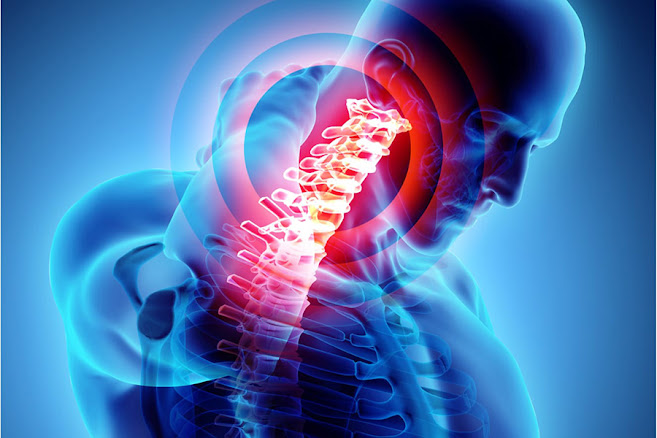Non-Opioid Pain Treatment: Global Growth in Non-Opioid Approaches for Managing Chronic Pain
 |
| Global Non-Opioid Pain Treatment |
As concerns rise regarding the over prescription of opioids for chronic pain management, non-pharmacological therapies are gaining prominence worldwide. With global guidelines recommending Non-Opioid Pain Treatment options as first-line treatment in many cases, here is an overview of some of the most common alternative approaches.
Physical Therapy and Exercise
Physical therapy and prescribed exercise programs are mainstays of non-drug
chronic pain treatment. Physiotherapy aims to address pain triggers through
manual techniques like massage or joint mobilizations combined with a home
exercise plan. Regular low-impact aerobic exercise and strength training can
help manage pain by improving mobility and core stability while promoting
relaxation through endorphin release. For some chronic conditions like back
pain, studies show physical therapy outcomes compare favorably to medication
over the long term with fewer side effects Global
Non-Opioid Pain Treatment. Many health systems now offer physical
therapy options before considering prescription opioids.
Cognitive Behavioral Therapy
Cognitive behavioral therapy (CBT) helps chronic pain patients cope with and
process their experiences. CBT techniques teach patients how their thoughts,
outlook, and behaviors impact pain perception and teach new skills to improve
functionality. Group or individual CBT sessions may focus on relaxation,
distraction techniques, goal setting, activity pacing, and cognitive restructuring
to address unhelpful thought patterns that exacerbate pain. Research suggests
CBT combined with other non-drug measures often compares well to medications
alone for various chronic pain diagnoses.
Complementary and Alternative Medicine
Complementary and alternative medicine (CAM) encompasses natural and
traditional healing approaches. Acupuncture, which involves thin needles
inserted at specific points, is commonly used by chronic pain patients
worldwide and advocated as an opioid alternative by some clinicians. Other
popular CAM modalities for pain include massage, chiropractic care, herbal
medicines like willow bark extract, and mindfulness or meditation practices.
While conclusive evidence for some CAM therapies remains limited, proponents
emphasize their generally mild side effect profiles versus pharmaceuticals.
Integrative clinics pair CAM with conventional care.
Neurostimulation Devices
Newer neurostimulation devices provide drug-free pain relief through targeted
electrical nerve stimulation. Spinal cord stimulators deliver mild electrical
impulses to the spine via an implanted device and have demonstrated
effectiveness for leg and back pain. Transcutaneous electrical nerve
stimulators (TENS) are externally applied electrode patches that stimulate
peripheral nerves for musculoskeletal conditions. Many insurers now cover
stimulator therapies as alternatives to long-term opioid prescriptions when
other options fail. Although initial costs are higher, stimulators may prove
cost-effective in the long run by reducing reliance on pricey pain drugs and
related medical costs from side effects.
Interventional Pain Procedures
Precise image-guided injections and other interventional pain procedures are
standard non-pharmacological approaches worldwide when conservative therapy
fails. Epidural steroid injections introduce anti-inflammatory medication into
the epidural space surrounding the spinal cord to treat radiating back pain.
Facet joint and trigger point injections target specific structures thought to
be pain generators. Radiofrequency ablation uses heat to denervate targeted
nerves for ongoing pain relief. While not cures, these short-term procedures
aim to provide weeks to months of pain reduction and functional improvement,
buying time for other long-term strategies to take effect.
Multidisciplinary Pain Clinics
As chronic pain reflects complex interactions between physical, psychological,
and social factors, integrated multidisciplinary treatment proves most
successful. Specialized pain clinics pair medical and interventional options
with psychological support, physical rehabilitation, and occupational or
lifestyle counseling under one roof. Weekly group sessions led by a team of
clinicians facilitate balanced, holistic care tailored to individual patient
needs and goals. Research confirms multidisciplinary approaches significantly
improve function and quality of life compared to stand-alone treatments and
reduce healthcare costs over time. As evidence grows, more communities
worldwide are establishing multidisciplinary programs.
Widespread Adoption of Non-Opioid Pain Treatment Options
Guidelines from major medical organizations now recommend aggressive
utilization of non-pharmacological options before or instead of prescription
opioids whenever possible for chronic pain. As awareness grows of risks like
addiction, overdose and side effects from long-term opioid use, patients and
providers alike increasingly embrace integrated care models emphasizing
drug-free therapies. Novel technologies also expand available alternatives.
While prescription opioids retain a role, global efforts shift focus to safer,
multi-modal non-opioid options for chronic pain management. Reducing reliance
on opioid analgesics represents a significant public health priority

%20Treatment%20(1).jpg)

Comments
Post a Comment